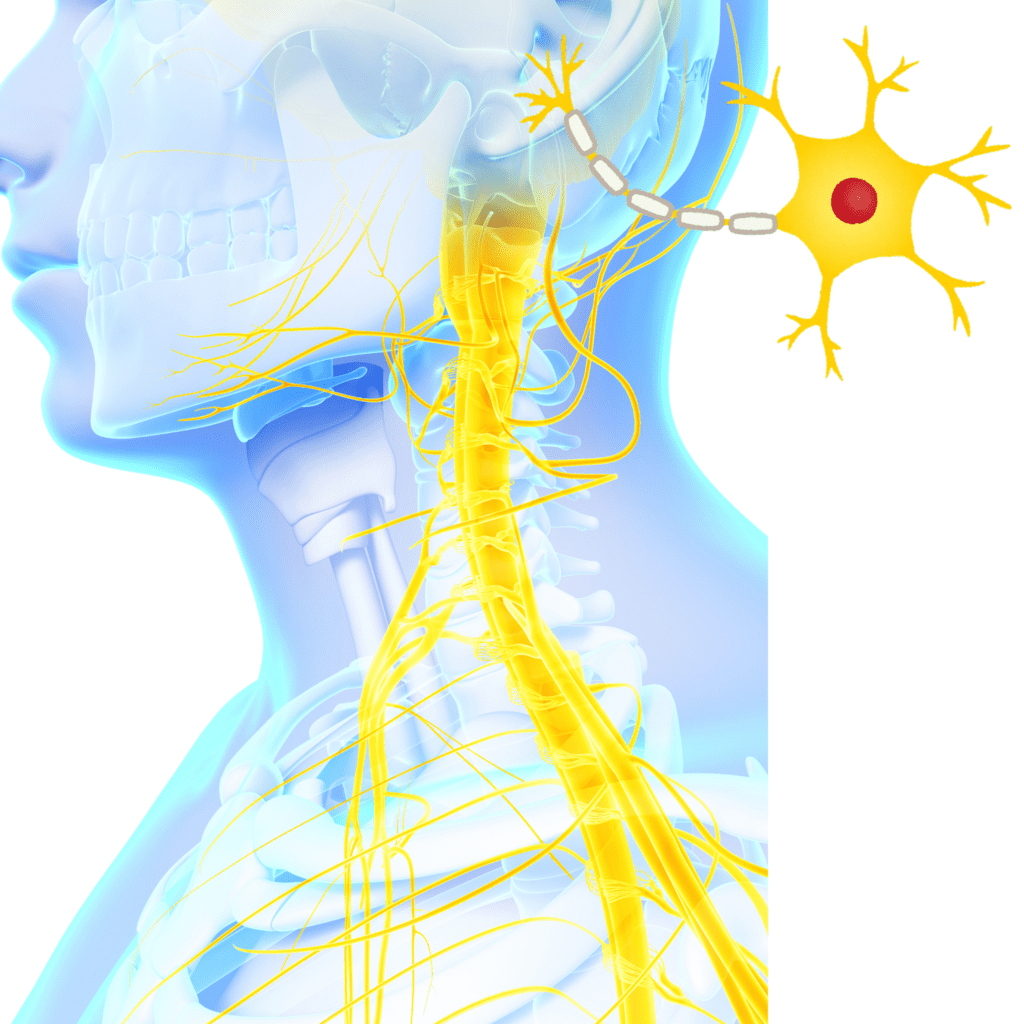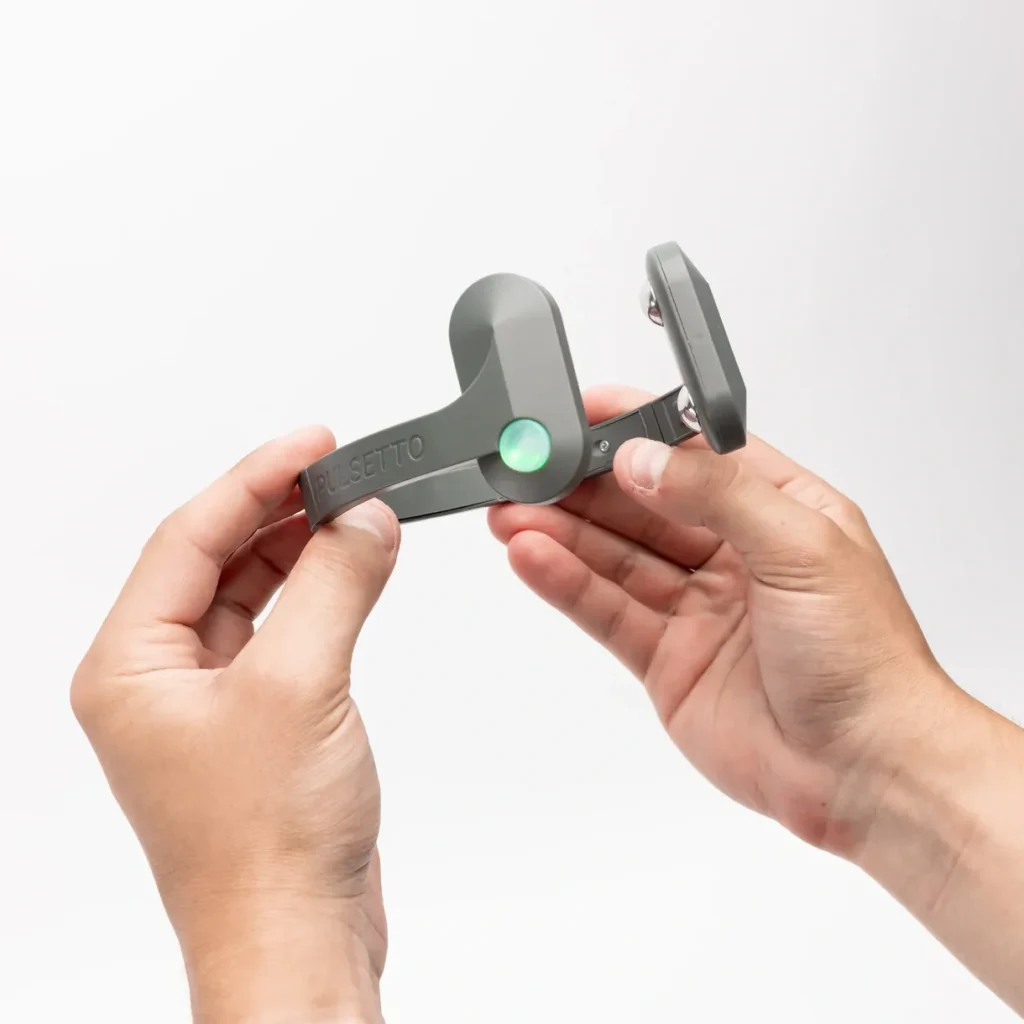Vagus Nerve Exercises For Sleep: Use Your Body’s Hidden ‘Sleep Switch’
Struggling to fall asleep? You’re not alone. Like millions of others, I spent years tossing and turning until I discovered something remarkable: the vagus nerve, your body’s natural relaxation pathway.
This powerful nerve, running from your brain to your abdomen, holds the key to deep, restorative sleep – and I’m excited to share how you can activate it.
From simple breathing techniques to innovative solutions like the Pulsetto device (learn more here), there are multiple ways to stimulate this vital nerve for better sleep.
The Vagus Nerve: Your Body’s Sleep Switch

The vagus nerve isn’t just another nerve in your body – it’s your natural relaxation superhighway.
This remarkable nerve runs from your brain to your abdomen, acting as the master controller of your rest-and-digest response.
When properly stimulated, it’s like having a built-in sleep meditation expert working for you 24/7.
Why Your Vagus Nerve Matters for Sleep
Recent sleep research has revealed something fascinating: people with stronger vagal tone tend to sleep better.
A 2022 study found that transcutaneous vagus nerve stimulation significantly improved sleep quality in people with insomnia. The research showed that gentle electrical stimulation of the vagus nerve helped participants fall asleep more easily and experience better quality rest.
But here’s the exciting part – you don’t need complex medical procedures to activate this natural sleep enhancer.
5 Powerful Vagus Nerve Exercises for Better Sleep
1. The Deep Belly Breath Technique
Time needed: 5-10 minutes
Lie back and place one hand on your chest and another on your belly. Now, breathe deeply so your belly expands while your chest stays relatively still. This simple exercise activates your vagus nerve immediately, preparing your body for deep sleep.
2. The Cold Splash Method
Time needed: 30 seconds
This might sound surprising, but a quick splash of cold water on your face before bed can work wonders. The cold triggers your diving reflex, immediately activating your vagus nerve and lowering your heart rate.
3. Humming for Harmony
Time needed: 2-3 minutes
Try humming a low-pitched tune before bed. The vibrations stimulate your vagus nerve through your throat, creating a natural calming effect. It might feel silly at first, but the results can be remarkable.
4. The Ear Massage Technique
Time needed: 2-4 minutes
Gently massage the inner part of your ear, focusing on the area just inside the ear canal. This stimulates the auricular branch of your vagus nerve, often triggering an immediate relaxation response.
5. The Legs-Up-the-Wall Pose
Time needed: 5-15 minutes
This gentle yoga pose is particularly effective at stimulating the vagus nerve while promoting natural relaxation.
Enhancing Your Sleep with Modern Technology
While these simple exercises work wonders, there’s an exciting new way to stimulate your vagus nerve: the Pulsetto device. It’s a clever little gadget that takes the guesswork out of vagus nerve stimulation, making it easier than ever to improve your sleep.
Why I Tried Pulsetto for Sleep
Here’s what I love about Pulsetto – it’s super easy to use and fits perfectly into your bedtime routine. Instead of trying to remember all the exercises, you can simply put it on and let it do its thing. It gently stimulates your vagus nerve while you relax, making the whole process effortless.
Try Pulsetto for better sleep →
What makes Pulsetto unique is its ability to deliver gentle electrical pulses that stimulate the vagus nerve while you rest. Think of it as having a personal sleep assistant that works while you relax. After trying it myself, I’ve noticed:
- Faster sleep onset
- More consistent deep sleep
- Easier time staying asleep
- Better morning alertness
Building Your Perfect Sleep Routine
The key to success with vagus nerve exercises is consistency. Here’s a simple evening routine that combines traditional exercises with modern solutions:
- Start with the cold splash method (30 seconds)
- Practice deep belly breathing (5 minutes)
- Use the Pulsetto device while reading or relaxing (15-20 minutes)
- Finish with gentle ear massage (2 minutes)
Common Questions About Vagus Nerve Stimulation for Sleep
What is the vagus nerve?
The vagus nerve is the longest cranial nerve in the body, extending from the brainstem to the abdomen. It plays a crucial role in regulating various bodily functions, including heart rate, digestion, and the relaxation response.
How does stimulating the vagus nerve improve sleep?
Vagus nerve stimulation activates the parasympathetic nervous system, which promotes relaxation and reduces stress. This can help lower heart rate, decrease blood pressure, and create an internal environment conducive to restful sleep.
Are vagus nerve exercises safe for everyone?
Generally, vagus nerve exercises are safe for most people. However, people with certain medical conditions, such as heart problems or epilepsy, should ask their healthcare provider before starting any new exercise regimen.
How long does it take to see results from vagus nerve exercises?
The time it takes to see results from doing vagus nerve exercises can vary from person to person. Some people may notice improvements in sleep quality within a few days, while others might take several weeks of consistent practice to experience significant changes.
Can vagus nerve stimulation help with other health issues besides sleep?
Yes, research suggests that vagus nerve stimulation may have benefits for various health conditions, including depression, anxiety, inflammation, and digestive issues. However, more studies are needed to fully understand its potential applications.
Is it possible to overstimulate the vagus nerve?
While it’s rare, it is possible to overstimulate the vagus nerve, which can lead to symptoms like lightheadedness or nausea. It’s important to start slowly with these exercises and pay attention to how your body responds.
How does the Pulsetto device work for vagus nerve stimulation?
The Pulsetto device delivers mild electrical pulses to the vagus nerve through the skin. These pulses are designed to stimulate the nerve and promote relaxation.
Can vagus nerve exercises replace sleep medication?
While vagus nerve exercises can be effective for improving sleep, they should not be used as a replacement for prescribed sleep medication without consulting a healthcare provider. Always talk about changes to your sleep regimen with a medical professional.
How does stress affect the vagus nerve and sleep?
Chronic stress can weaken vagal tone, making it harder for the body to relax and transition into sleep. Vagus nerve exercises can help counteract the effects of stress by activating the parasympathetic nervous system and promoting relaxation.
Your Path to Better Sleep Starts Here
Better sleep doesn’t have to remain a dream. By understanding and working with your vagus nerve, you can unlock your body’s natural ability to rest deeply and wake refreshed. Whether you start with simple breathing exercises or explore modern solutions like Pulsetto, the key is to begin your journey toward better sleep today.
Experience better sleep with Pulsetto →
Remember, quality sleep isn’t a luxury – it’s essential for your health, happiness, and daily performance. Your vagus nerve could be the key to unlocking the restful nights you’ve been searching for.
Related Articles:
Disclaimer: This article contains affiliate links. I may receive a small commission if you purchase through these links, at no additional cost to you. I only recommend products I believe can help my readers. Thank you for your support.

